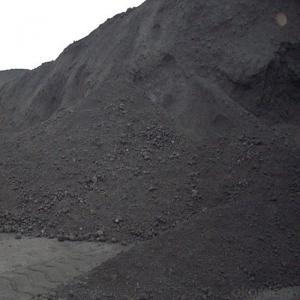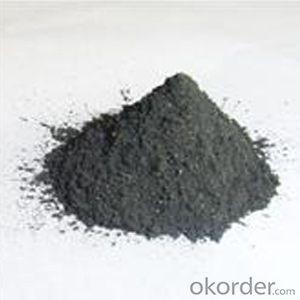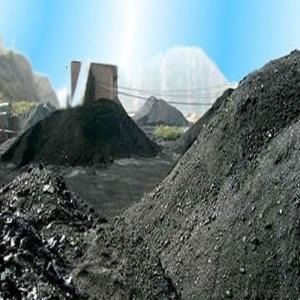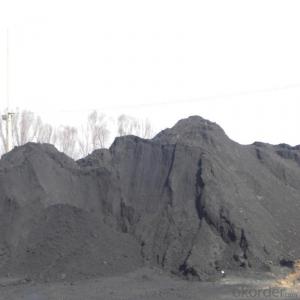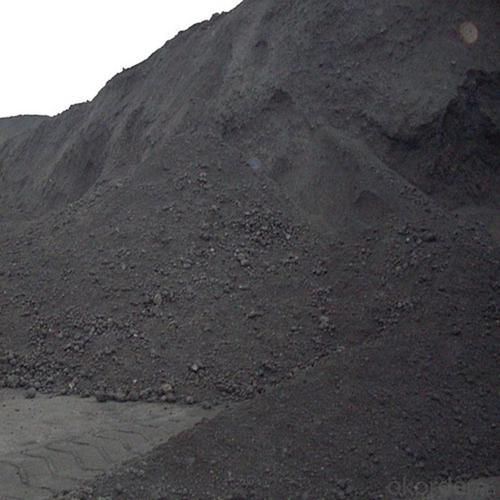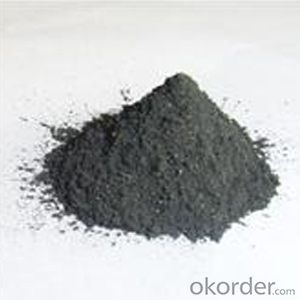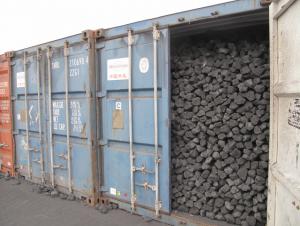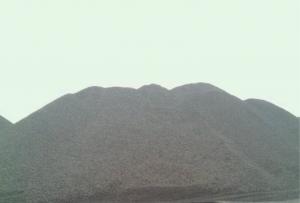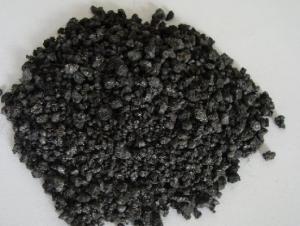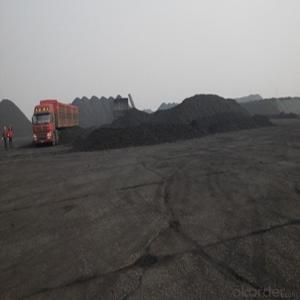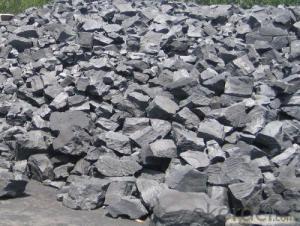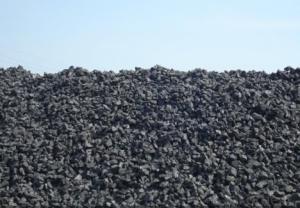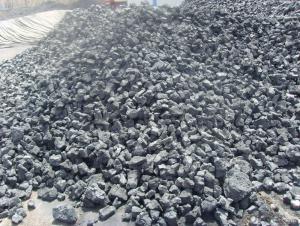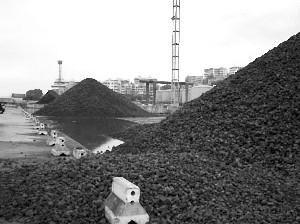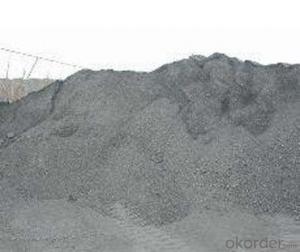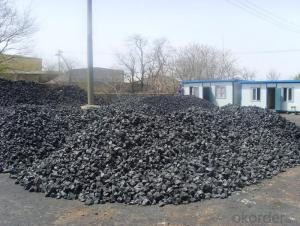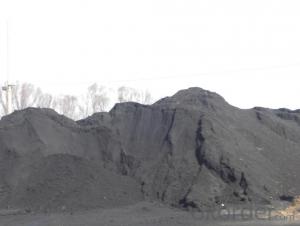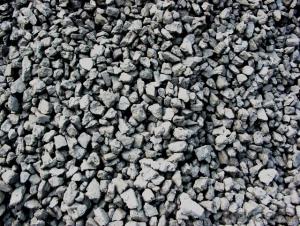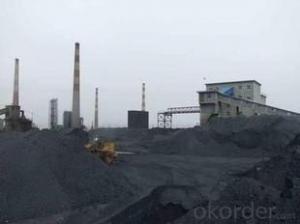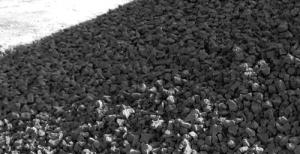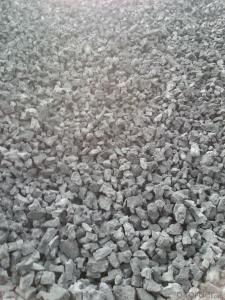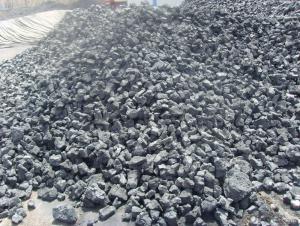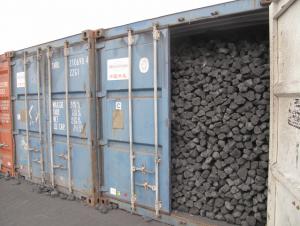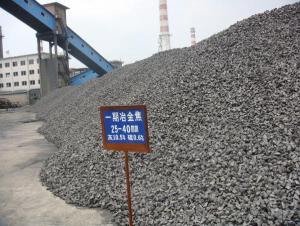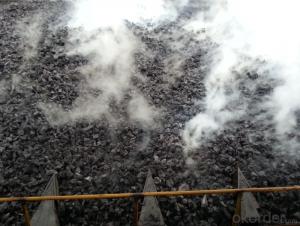Coke Breeze of 0 to 5 mm
- Loading Port:
- Tianjin
- Payment Terms:
- TT OR LC
- Min Order Qty:
- 100 m.t.
- Supply Capability:
- 3000 m.t./month
OKorder Service Pledge
OKorder Financial Service
You Might Also Like
1. Structure of Metallurgical Coke of Coke Strength after Reactivity 65 Description:
Coke is a hard texture, with carbon as the main component of irregular porous body, with cracks and defects in silver. The true density is 1.8 ~ 1.95 g/cm3, bulk density is 400 ~ 500 kg/m3, the porosity of 35% ~ 35%,.Coke all vertical and horizontal crack can be seen with the naked eye observation. The vertical and horizontal crack along the thick break, still is focal piece containing micro cracks.
Coke production of coking coal (coking coal), also known as metallurgical coal, belongs to the bituminous coal or sub-bituminous coal. Or use the various ratio of coal blend coking. Coking coal in the coke oven is isolated from oxygen after 1000 ° C carbonization is volatile component has been removing, the rest of the solid matter or coke. With the need of ironmaking as little as possible of sulphur, phosphorus pests, so should choose low sulfur, low phosphorus of coking coal.
2. Main Features of the Metallurgical Coke of Coke Strength after Reactivity 65:
• Quality assurance
• Mutual benefit
• Preferential price
• Various choice
3. Metallurgical Coke of Coke Strength after Reactivity 65 Images:
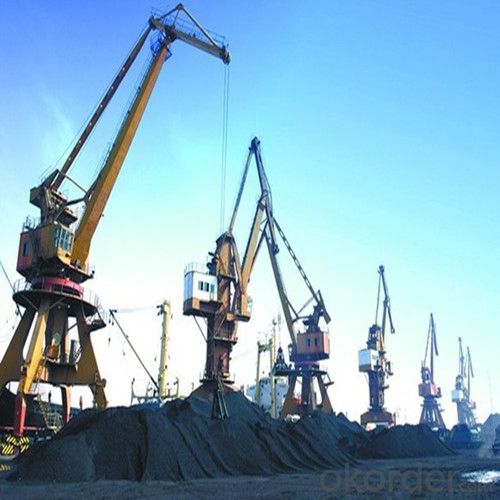
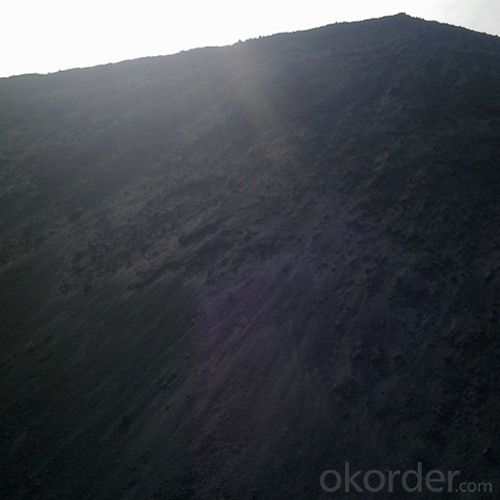
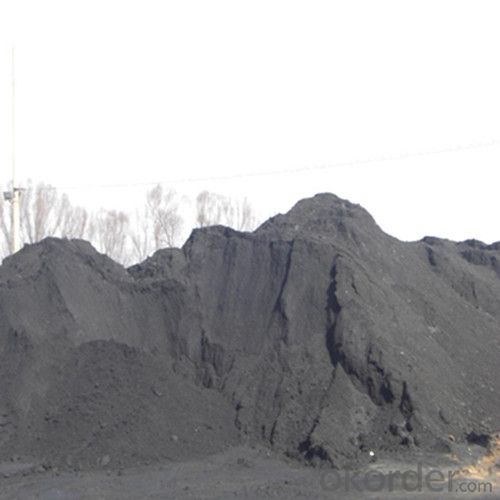
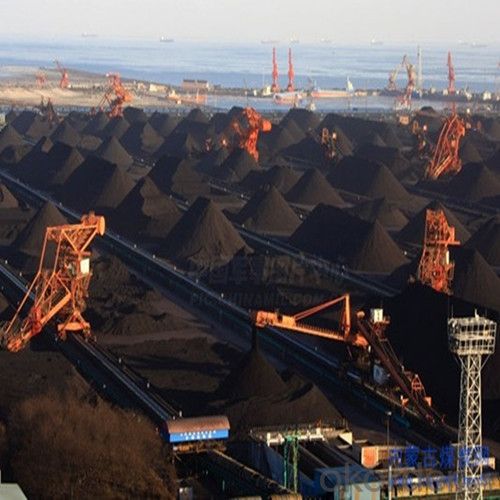
4. Metallurgical Coke of Coke Strength after Reactivity 65 Specification:
Parameters | Ash(DB) | Moisture (ARB) | Volatile Matter (DB) | Fix Carbon (DB) | Size 0-5mm | +5mm |
Guarantee | 12.5%max | 15%max | 1.5%max | 83%min | 90%min | 5%max |
5. FAQ
We have organized several common questions for our clients,may help you sincerely:
1) Main type
Metallurgical coke is blast furnace coke, coke, iron alloy and nonferrous metal smelting with coke. As more than 90% of the metallurgical coke for blast furnace ironmaking, so often called the blast furnace coke metallurgical coke.
Foundry coke is dedicated to cupola molten iron. Coke is the main fuel of cupola molten iron. Its role is hot metal melting furnace charge and overheating, support stock column maintain its good air permeability. As a result, coke blocks should have large, low reactivity, low porosity, with sufficient impact crushing strength, ash content and low sulfur content.
2) Application of coke
• Used for blast furnace ironmaking and used for copper, lead, zinc, titanium, antimony, mercury
• Other non-ferrous metal smelting of blast furnace,
• Reducing agent, compound
• The function of stock column frame.
3) The history of coke
From around the world, the coking coal resources are scarce, it is the precious resources must be protected, so has been seldom used coking coal coking alone. In China, the first kind of typical coal coking coal with hebei feng feng coal mine, shanxi gujiao cetrimonium, heilongjiang drops of jixi, anhui huaibei zhangzhuang and dabao top-coal panzhihua in sichuan province.The second category of typical coal coking coal have jilin tonghua iron works and the Inner Mongolia baotou beach ditch coal.Benxi, northeast China hebei tangshan, jingxing, shandong xinwen, etc., are all famous origin of coking coal.
Parameters | Ash(DB) | Moisture (ARB)
| Volatile Matter (DB) | Fix Carbon (DB) | Size 0-5mm
|
+5mm |
Guarantee | 12.5%max | 15%max | 1.5%max | 83%min | 90%min | 5%max |
At present, the main customers are NOBLE GROUP, IMR and so on. Our mainoverseas markets are Japan, India, Brazil, Iran, Vietnam, and so on.
Let me know your demands then I can check availability.
- Q: Coking coal, coke, coal, steam coal what is the difference?
- Coking coal is the raw material for coke
- Q: What are the main uses of coke
- Main use of coke:1, is the most important coking products, more than 90% countries most coke used in blast furnace, blast furnace with coke instead of charcoal, laid the foundation for the large-scale modern blast, is an important milepost in the history of metallurgy.
- Q: Coke is divided into several kinds of specifications ah
- Three: 1 2 3 coke metallurgical coke of high sulfur cokeCoke is in coal under the condition of air isolation, heating to 950-1050 DEG C, after drying, pyrolysis, melting, bonding, curing and contraction of the final stage is made, the process is called high temperature coking (high temperature carbonization). Coke obtained from high temperature coking for blast furnace smelting, casting and gasification. Coke oven gas produced in the process of coking and recovery is not only a high calorific value of fuel, but also an important industrial raw material for organic synthesis. Coke is mainly used in blast furnace ironmaking and smelting of non-ferrous metals such as copper, lead, zinc, titanium, antimony, mercury and so on.
- Q: Coke indicators are divided into grades
- Coke crushing strength refers to coke can resist foreign impact force without ability along cracks or defects at the broken, represented by the M40 value; wear strength of coke coke refers to the ability to resist external friction without surface of glass forming debris or powder, said M10. The cracking degree of coke affects the M40 value of its breaking strength, and the pore structure of coke affects the M10 value. There are many methods for determination of M40 and M10 value method, commonly used in our country the German migon drum test.
- Q: Some experimental results summarized the following two facts: the coke can not be used to restore aluminum mine, but it can be used for the reduction of copper and iron; no containing copper sulfate solution with tin, thus the activity sequence C, Al, Cu, Fe of the four elements is ______.
- K, Ca, Na, C, Mg, Al is not able to use C, CO, H2 and so on to restore the preparation of metal, because these metals are very active, can be used to restore copper and iron ore, indicating that the reduction of strong;
- Q: Braised meat burning coke, iron black layer, I do not know how to clean, please help answer
- Orange to the bottom of the potCut a few slices of orange into the pot boil, stuffy night, second days will be turned over the paste paste, it is easy to clean up.7, the old telephone card, magnetic card washing paste potProblem Description: run out of phone cards, shopping cards, discount cards, VIP cards piled up, although there are people who love this kind of thing, but most people had no interest, so, or use it to do something. When cooking is paste pot, if made of hard coke fouling cleaning shovel, cause scratches with the wooden shovel, and difficult to completely remove the coke fouling. Why not let those old cards reflect the use value?Method of operation: with the card along the edge of the pot, and gradually remove the coke scale clean. Note that when you do not need to force too hard. If the card is made of hard plastic, can also be used to scrape the dirt on the gas stove.
- Q: What are the requirements for the quality of coke in blast furnace smelting
- Coke is a solid product of high temperature carbonization, the main component is carbon, is a crack and irregular pore structure (or porous). The number of cracks has a direct impact on the strength and crushing strength of the coke, the index is generally measured in terms of crack degree (the number of cracks in the unit volume coke). The index of pore structure is mainly expressed by the porosity rate (the percentage of the total volume of coke), which affects the reactivity and strength of coke.
- Q: Do not understand why some of the indicators of coke is the cause of the full analysis of phosphorus or foundry use of this time?It is best to use the foundry requirements? Thank you
- As everyone knows, sulfur and phosphorus is harmful substances in the metal, because the sulfur is out in coke processing, so this index is not required, but the phosphorus in this process has not been effectively removed, so this is the requirement of foundry process or smelting plant. Phosphorus can reduce the strength of the metal, will lead to the metal "cold crisp", so to control the phosphorus content of coke, to prevent phosphorus into the metal.
- Q: What does the M40% and M25% mean in the analysis of coke?
- (2) mainly used in: Coal Science and Technology (first level), coal processing and utilization (level two), coal chemistry and coal quality analysis (level three)
- Q: The coke is divided into several separate uses
- Gasification coke is used for the production of coke gas. The utility model is mainly used in a fixed bed coal gas producer with solid slag discharging, and is used as a gasification raw material to produce CO and H2 as combustible components. The main reaction of gasification process:C+O2 - CO2+408177KJ
Send your message to us
Coke Breeze of 0 to 5 mm
- Loading Port:
- Tianjin
- Payment Terms:
- TT OR LC
- Min Order Qty:
- 100 m.t.
- Supply Capability:
- 3000 m.t./month
OKorder Service Pledge
OKorder Financial Service
Similar products
Hot products
Hot Searches
Related keywords
